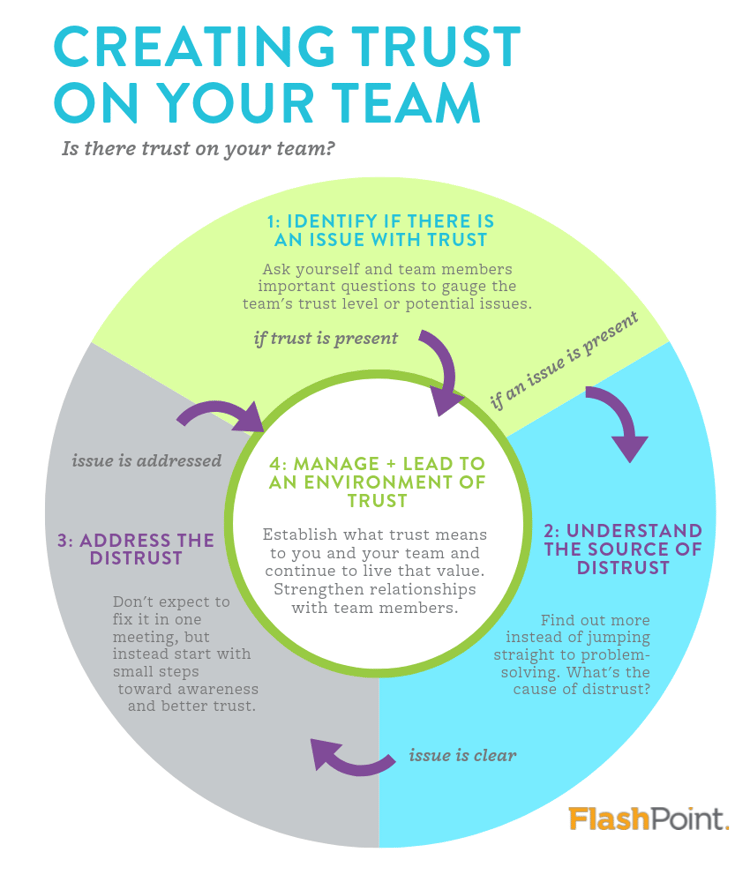The DiSC Profile, Explained: How Two Identical DiSC Styles Can be Unique








The most important foundational component for an effective team? When asked, most people will say: trust.
In fact, most people will say without trust, the team will move slower toward decisions, will be less productive, will be less engaged, and team retention will be lower. And research proves this anecdotal feedback to be true. To take it a step further, an environment of low trust is often attributed to, and correlated with, the leader of that team[1].
Leaders make a difference–for productivity, engagement, and results to occur, team leaders must take responsibility for creating and establishing a high level of trust among their team members….and between the team members and the leader.
Expecting trust to “work itself out” is just plain silly. Teams that have low trust rarely identify methods to repair broken trust on their own; their defense is often to avoid conversations about it at all and, in fact, just stick to “minding my own business”. Broken trust doesn’t repair in time and in today’s VUCA world, there IS no time to wait for such an occasion. Sending untrusting and battling people to HR is not the solution either, and every competent HR professional I know (and I know a lot) will send those team members right back to the manager to fix it. Simply put, there is one person who has the primary responsibility to create an environment of trust: the leader of the team.
Want to help your leaders understand, embrace, and reinforce an environment of trust within their team? Share this easy-to-follow model to guide them to the steps needed to understand, embrace, fix, and sustain a foundation of trust for their team:

You may have an intuitive sense that trust has been broken or never was. But don’t rely on that gut. Get the facts. Ask yourself some important questions and then ask your team members too, such as the following:
Answering yes to any of these questions can point to an issue with trust on the team.
Just because you’ve identified there may be a trust issue doesn’t mean you jump right in to solve it. Find out more and consider taking some of these actions to do so:
Various options can be considered here to address the broken trust and to start on the pathway to a higher level of trust. Start with small steps to gain initial awareness, including some of these potential actions:
A leader can never let her or his guard down when it comes to trust. Whether or not you started from a place of disrupted trust or you simply want to head off any trust issues at the pass, here are some actions any leader can take to create, establish, and sustain an environment of trust within their team:
Once you’ve worked on creating a trusting environment for your team, remember the next step: Continue to work a trusting environment for your team.
And the next step? Continue to work on a trusting environment for your team. You get the idea.
Broken trust is hard to repair, so as a leader, never let it go. You’ll be creating a team with higher productivity, higher retention, greater engagement, and faster decision-making. Nothing creates more effective teams than a strong foundation of trust that only the team leader can create and sustain.
[1] How Lack Of Trust Is Demotivating Employees And Costing Business Dearly (And What To Do About It), Forbes, Jun 6, 2016






We're excited to partner with you to empower your leaders. Let us
know how we can be of service!